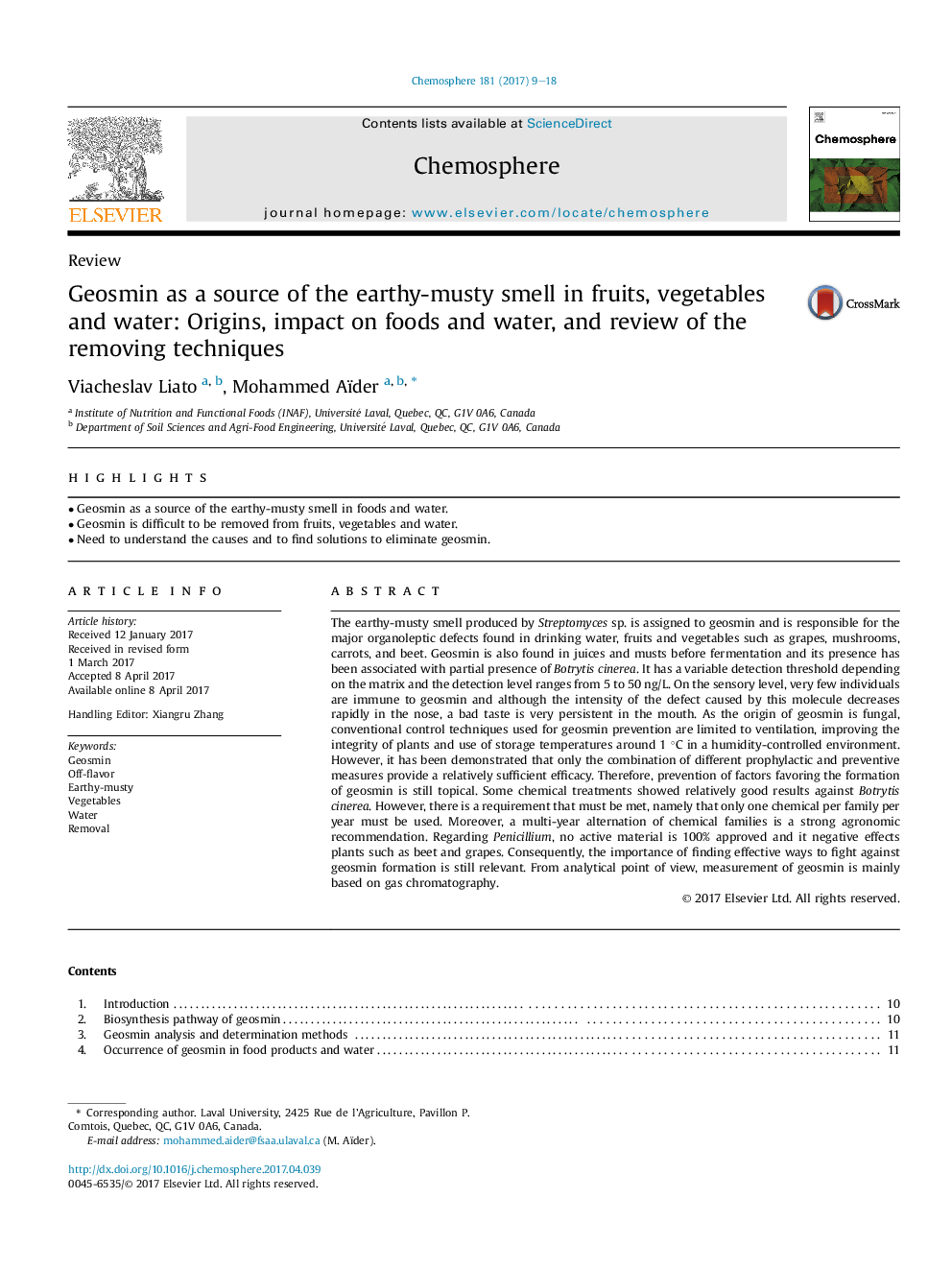| کد مقاله | کد نشریه | سال انتشار | مقاله انگلیسی | نسخه تمام متن |
|---|---|---|---|---|
| 5747186 | 1618790 | 2017 | 10 صفحه PDF | دانلود رایگان |

- Geosmin as a source of the earthy-musty smell in foods and water.
- Geosmin is difficult to be removed from fruits, vegetables and water.
- Need to understand the causes and to find solutions to eliminate geosmin.
The earthy-musty smell produced by Streptomyces sp. is assigned to geosmin and is responsible for the major organoleptic defects found in drinking water, fruits and vegetables such as grapes, mushrooms, carrots, and beet. Geosmin is also found in juices and musts before fermentation and its presence has been associated with partial presence of Botrytis cinerea. It has a variable detection threshold depending on the matrix and the detection level ranges from 5 to 50 ng/L. On the sensory level, very few individuals are immune to geosmin and although the intensity of the defect caused by this molecule decreases rapidly in the nose, a bad taste is very persistent in the mouth. As the origin of geosmin is fungal, conventional control techniques used for geosmin prevention are limited to ventilation, improving the integrity of plants and use of storage temperatures around 1 °C in a humidity-controlled environment. However, it has been demonstrated that only the combination of different prophylactic and preventive measures provide a relatively sufficient efficacy. Therefore, prevention of factors favoring the formation of geosmin is still topical. Some chemical treatments showed relatively good results against Botrytis cinerea. However, there is a requirement that must be met, namely that only one chemical per family per year must be used. Moreover, a multi-year alternation of chemical families is a strong agronomic recommendation. Regarding Penicillium, no active material is 100% approved and it negative effects plants such as beet and grapes. Consequently, the importance of finding effective ways to fight against geosmin formation is still relevant. From analytical point of view, measurement of geosmin is mainly based on gas chromatography.
Journal: Chemosphere - Volume 181, August 2017, Pages 9-18